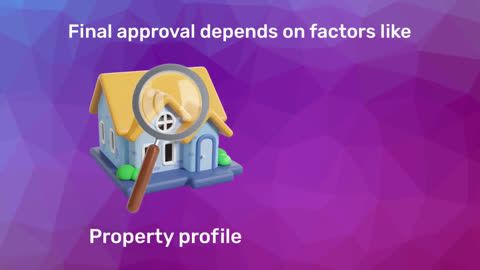Whether you are a first-time renter or a seasoned tenant, understanding what a tenancy agreement entails is vital for a smooth rental experience. Let's dive deeper into this essential document, exploring its significance, types, and key components.
Importance of a tenancy agreement
A tenancy agreement is essential for several reasons:1. Protection for both parties: A tenancy agreement protects both the landlord and the tenant. It ensures that the landlord gets paid rent on time, and the tenant has a place to live without the fear of sudden eviction.
2. Clear expectations: The agreement sets clear expectations for both parties. It outlines the rules and regulations of living in the property, helping to avoid disputes in the future.
3. Legal evidence: If a conflict arises, the tenancy agreement serves as legal evidence in court. Both parties can refer to the agreement to resolve any disputes.
4. Security: For tenants, having a tenancy agreement provides security and stability. They know how long they can stay and what their responsibilities are.
Types of tenancy agreements
There are different types of tenancy agreements, including:- Fixed-term tenancy:This agreement lasts for a specific period, such as six months or one year. It cannot be ended early unless both parties agree. This provides stability for both the landlord and the tenant.
- Periodic tenancy:This agreement continues until either the landlord or the tenant gives notice to end it. It can be weekly, monthly, or yearly. This offers flexibility for both parties.
- Leave and licence agreement:Common in India, this type of agreement allows the tenant to use the property for a specific period, usually 11 months, with an option to renew. This type of agreement is often preferred for its simplicity and ease of renewal.
Key components of a tenancy agreement
A tenancy agreement typically includes the following elements:- Names of the parties:The full names of the landlord and the tenant. This identifies who is involved in the agreement.
- Property details:The address and description of the rental property. This ensures there is no confusion about which property is being rented.
- Term of the tenancy:The start and end dates of the tenancy. This specifies how long the tenant will be renting the property.
- Rent amount:The amount of rent to be paid and the due date. This outlines the financial obligations of the tenant.
- Security deposit:The amount of the security deposit and the conditions for its return. This provides financial protection for the landlord.
- Responsibilities:The responsibilities of both the landlord and the tenant, such as maintenance and repairs. This ensures that both parties know what is expected of them.
- Rules:Any specific rules, such as pet policies or smoking restrictions. This helps maintain order and harmony in the rental property.
How to create a tenancy agreement
Creating a tenancy agreement involves several steps:- Draft the agreement: Use a template or seek legal advice to draft the agreement. Make sure it includes all the key elements. This ensures that the agreement is comprehensive and legally sound.
- Review the agreement: Both the landlord and the tenant should review the agreement carefully. Make sure everything is clear and understood. This helps avoid any future disputes.
- Sign the agreement: Both parties should sign the agreement. Each party should keep a copy for their records. This formalises the agreement and makes it legally binding.
Transitioning from tenancy to homeownership
As the years go by, many renters find themselves dreaming of something more permanent — homeownership. The idea of having a space that truly belongs to you, where you can create lasting memories and make your own rules, is an enticing prospect. But why should you consider making the leap from being a tenant to a homeowner? Let us explore the advantages of homeownership and how it can transform your life.- Building equity: One of the most significant benefits of homeownership is the ability to build equity. When you pay rent, that money is gone for good. However, with each mortgage payment, you are investing in an asset that will likely appreciate over time. This means that as the value of your home increases, so does your wealth.
- Stability and security: Owning a home provides a sense of stability that renting often cannot offer. You will not have to worry about sudden rent increases or being asked to move when your lease ends. Your home becomes a sanctuary where you can settle down and plan for the future.
- Creative freedom: When you own your home, you have the freedom to customise it to your liking. Want to paint the walls a vibrant colour? Go ahead! Thinking about remodelling the kitchen? The choice is yours. Homeownership allows you to express your personality and create a living space that truly reflects you.
- Tax benefits: Homeownership can also offer various tax advantages. Many homeowners can deduct mortgage interest and property taxes from their Income Tax Returns. This can lead to significant savings, making homeownership financially appealing.
Consider Bajaj Housing Finance Home Loan
Buying a home is a significant financial decision, but with the right home loan, it can become easier and more affordable. If you are considering purchasing a home, look no further than Bajaj Housing Finance Home Loan. You can benefit from attractive features such as:1. High loan amount: Get a home loan of up to Rs. 15 crore* to turn your dream home into reality.
2. Low interest rates: Enjoy interest rates starting from 8.25%* p.a, with EMIs as low as Rs. 741/lakh*.
3. Quick approval: Get approval within 48 Hours* of applying – sometimes even sooner.
4. Long repayment tenure: Repay your loan comfortably with tenure of up to 32 years.
5. No foreclosure fee*: Individual borrowers with a floating rate of interest can prepay or foreclose their loan at no extra charge.
6. Easy application: Benefit from our doorstep document collection service for a hassle-free process.
7. Balance transfer facility: Transfer your existing home loan and get a top-up loan with better terms.
Ready to take the next step toward your dream home? Apply for a Bajaj Housing Finance Home Loan today.




